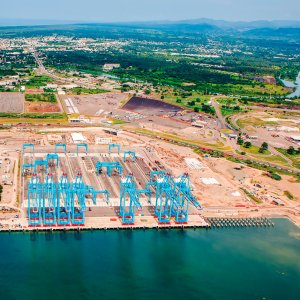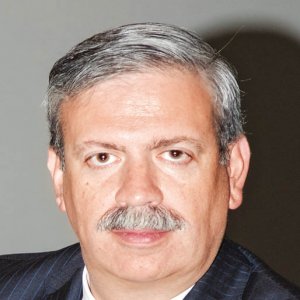Regenerate Neighborhoods to Create Ideal City

STORY INLINE POST
Q: What long-term strategies will Mexico City implement to ensure positive housing and urban development?
A: Mexico City is expected to reach a population of more than 8.74 million inhabitants by the first half of 2020 and the urban area will cover more than 199,000m2. In terms of population growth, the city is stable with a downward trend. Most of the population is at a productive age and due to their young age, they will need tens of thousands of homes in the coming years. These new generations will require new offices, shops and services but these must follow vertical growth models because the city can no longer expand. The south is surrounded by land reserves so we must optimize the urban land available.
Financial and regulatory instruments must be created to make the construction of affordable housing feasible for all socioeconomic groups. In the last few years, the increasing cost of housing has led the low-income population to migrate to the periphery of the city or to distant metropolitan municipalities or even sometimes onto land reserves, creating an irregular use of land.
Q: What are the challenges to creating pedestrian-friendly infrastructure that does not impede transportation?
A: The Mexico City government has demonstrated its commitment to sustainable mobility by implementing urban development policies that prioritize pedestrians, cyclists and public transportation. Transportation Oriented Development (DOT) promotes the development and densification of areas with existing mass transportation systems, such as the Metro and Metrobús. Implementing DOT has successfully densified municipalities such as Benito Juarez and Cuauhtemoc.
Q: How will SEDUVI improve public transportation and expand its reach while reducing commute times?
A: SEDUVI is designing an integrated public transport system in Mexico City that is a prerogative of SEMOVI. SEDUVI plans to create a compact city with a mix of land uses, allowing city dwellers to carry out various activities in the same area, as well as having access to education, health and recreational services. This must be reinforced with accessible housing policies because people are obligated to migrate toward the State of Mexico or faraway municipalities, leading to a loss of time and money through daily commutes.
Q: Mexico City has a housing deficit of about 250,000 homes. What is SEDUVI doing to reduce this number?
A: The housing deficit originates from the high cost of land, which translates to expensive housing. It is crucial that the legislative assembly reforms General Planning Norm 26, incentivizing the construction of social housing or generating new norms that allow low and middle-income homebuilders to enter higher building areas or housing densities than those established by the Municipality Urban Development Programs. This would make it easier to construct decent housing at lower costs.
It also is necessary to implement tax mechanisms, such as value captures, which would enable the city to equally distribute the costs and benefits that urban development generates. This would strengthen infrastructure and public services in areas that need it the most, as well as subsidize dignified housing for low-income population segments.
In addition to the new housing deficit, there is a qualitative deficit of housing stock generated by homes that were built with dubious materials and in high-risk areas. These are in poor condition and overcrowded. The solution requires the implementation of credit programs, subsidies and vertical housing, as well as regularization and if necessary, relocation of irregular settlements from risky areas.
Q: Why does the capital have so many abandoned homes and how can these be used for decent housing?
A: The fact that Mexico City has a significant problem with abandoned housing is debatable, although it can be seen in various low-cost municipalities. Families live far from their jobs, which leads them to abandon their homes in search of housing that is closer to their workplace.
The known facts are that municipalities such as Gustavo A. Madero, Azcapotzalco, Miguel Hidalgo, Venustiano Carranza and Coyoacan have continued to lose population. This has occurred as a response to a change in family dynamics, where children migrate to other areas of the city to start their own families, leaving the parents alone. The result is that houses where five to six people once lived are now occupied by one or two people. In the last 30 years, the average number of people per household has dropped from 5.4 to 3.4, decreasing each year.
The second reason this has occurred is due to the transformation of commercial land use. This phenomenon occurs in municipalities or along roads that have a strong commercial dynamic, which encourages the transformation of housing properties into shops and offices. Such is the case of downtown Mexico City, where a huge number of homes have been transformed into commercial real estate. This dynamic can be reversed through the implementation of urban policies that increase the viability of the construction of affordable housing, allowing young families to rent or buy homes in the same area in which they grew up rather than being forced to migrate in search of cheaper housing.
Q: What supporting processes must be optimized to ensure security and sustainable vertical infrastructures?
A: For the last decade, Mexico City has experienced a trend of vertical growth that will continue to consolidate. Dense and compact growth is a sustainable alternative the city has to satisfy the housing, commercial and service requirements of its population. This model must be accompanied by the optimization of urban infrastructure and public services. Due to their location, many neighborhoods have high potential for development and regeneration but they have infrastructure networks as old as 50 years. These infrastructures must be replaced or rehabilitated to operate in mint condition. The necessary resources should come from the construction of new developments through the implementation of value capture schemes, urban migration work and contributions for improvements.






















